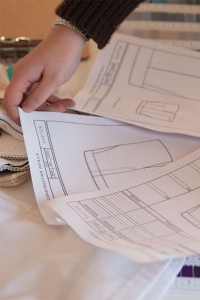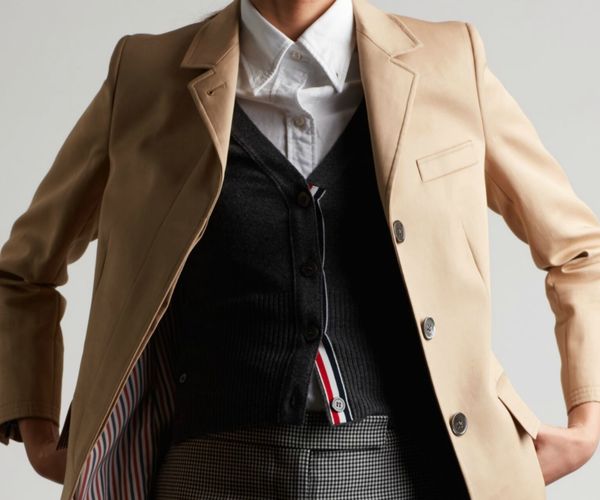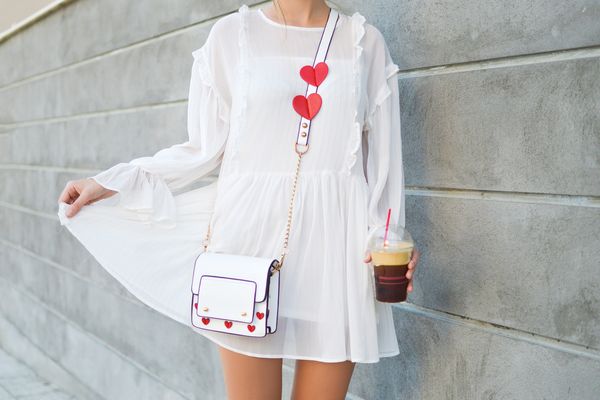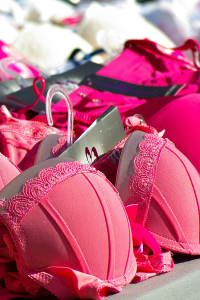As consumers, we have become more and more conscious of the importance of sustainability, and many have begun to change their buying habits, and fashion priorities as we understand more about the green agenda. Even those who haven’t changed their habits may be concerned and looking for ways they can ‘do their bit’ for the environment, without having found any practical solutions as yet.
Fashions finest have looked at the issues around sustainability as they stand today, and we have come up with some practical advice for consumers and customers to follow, in order to help us ‘do our bit’ for the environment.
The Problem:
It has been estimated that in the UK alone around 350,000 tons of clothing ends up as landfill every year, which is a huge proportion of - potentially recyclable - waste we produce. In addition to this issue, it takes at least 8,000 chemicals to turn raw materials into textiles. This use of chemicals causes irreversible damage to people and the environment. Studies have also been done which show that all of the tiny microfibers from clothing made from synthetic fabrics are polluting the earth’s waters through the process of laundering, and contaminating our food chain as well.
Although many people are aware of the issues with fast fashion – or quickly and cheaply made clothing, the insatiable appetite for fashion means people are actually buying more and more clothes, and according to Wikipedia; “With the fast fashion trend, garments tend to be used half as much as compared to 15 years ago.”
An article on The Fashion Law.com, written by Mark Sumner, lecturer in sustainability, fashion and retail at the University of Leeds, shows that “Since 2012, there has been a 10% increase in the amount of clothing purchased in the UK alone. And not only are consumers buying more; the rate at which their clothing gets discarded is becoming increasingly quicker as they chase the latest fashion trends. It is estimated there is over 30 billion pounds worth of clothing sitting in wardrobes across the UK that has not been worn for over 12 months.”
The Solution:
The goal of sustainable fashion is to ‘create flourishing ecosystems and communities through its activity’. The industry aims to do this by producing less pollution from production and consumption, improving wages and ensuring there is no labour exploitation in the industry, as well as promoting local production of goods.
As consumers, we can support this endeavour by looking closely at how we measure up to the 3 R’s. ‘Reduce, Reuse and Recycle’ and work out how we can improve and change our practices in order to be a part of the solution, instead of contributing to the problem.
Some practical ideas Fashions Finest have come up with for you to try on for size are:
Organise And Attend Swapping Parties:
This option is the greenest choice of all our suggestions. The idea is that once an item of clothing is not one you want to keep any longer, you take it to a swapping party, and let someone else who wants to use it take it off your hands, and you choose an item of clothing that takes your fancy as a swap!
If everyone did this with their unwanted clothing and accessories, waste would be dramatically reduced in our landfill sites.
Buying Second Hand (And Online):
Buying clothing and accessories second hand is a great way to promote sustainability, and if you can reduce your carbon footprint even further, by buying online, it’s an even bigger tick in the box! These items often work out cheaper than brand new goods as well, so it’s a win-win situation.
Donate Unwanted Clothing To Not For Profit Charities:
Fashions finest have looked at the issues around sustainability as they stand today, and we have come up with some practical advice for consumers and customers to follow, in order to help us ‘do our bit’ for the environment.
The Problem:
It has been estimated that in the UK alone around 350,000 tons of clothing ends up as landfill every year, which is a huge proportion of - potentially recyclable - waste we produce. In addition to this issue, it takes at least 8,000 chemicals to turn raw materials into textiles. This use of chemicals causes irreversible damage to people and the environment. Studies have also been done which show that all of the tiny microfibers from clothing made from synthetic fabrics are polluting the earth’s waters through the process of laundering, and contaminating our food chain as well.
Although many people are aware of the issues with fast fashion – or quickly and cheaply made clothing, the insatiable appetite for fashion means people are actually buying more and more clothes, and according to Wikipedia; “With the fast fashion trend, garments tend to be used half as much as compared to 15 years ago.”
An article on The Fashion Law.com, written by Mark Sumner, lecturer in sustainability, fashion and retail at the University of Leeds, shows that “Since 2012, there has been a 10% increase in the amount of clothing purchased in the UK alone. And not only are consumers buying more; the rate at which their clothing gets discarded is becoming increasingly quicker as they chase the latest fashion trends. It is estimated there is over 30 billion pounds worth of clothing sitting in wardrobes across the UK that has not been worn for over 12 months.”
The Solution:
The goal of sustainable fashion is to ‘create flourishing ecosystems and communities through its activity’. The industry aims to do this by producing less pollution from production and consumption, improving wages and ensuring there is no labour exploitation in the industry, as well as promoting local production of goods.
As consumers, we can support this endeavour by looking closely at how we measure up to the 3 R’s. ‘Reduce, Reuse and Recycle’ and work out how we can improve and change our practices in order to be a part of the solution, instead of contributing to the problem.
Some practical ideas Fashions Finest have come up with for you to try on for size are:
Organise And Attend Swapping Parties:
This option is the greenest choice of all our suggestions. The idea is that once an item of clothing is not one you want to keep any longer, you take it to a swapping party, and let someone else who wants to use it take it off your hands, and you choose an item of clothing that takes your fancy as a swap!
If everyone did this with their unwanted clothing and accessories, waste would be dramatically reduced in our landfill sites.
Buying Second Hand (And Online):
Buying clothing and accessories second hand is a great way to promote sustainability, and if you can reduce your carbon footprint even further, by buying online, it’s an even bigger tick in the box! These items often work out cheaper than brand new goods as well, so it’s a win-win situation.
Donate Unwanted Clothing To Not For Profit Charities:
Donating our unwanted things to a charity shop is often something we can quickly and easily do, and we can know we are doing our bit for the environment too…however, a word of caution. Some charities send much of the clothing you donate to third world countries for re-sale, and the majority of these clothes can still end in landfill as the average European/American sized person is several sizes larger than the global average.
Approved sustainable charities include Oxfam and The Salvation Army, who work hard to reduce their landfill as well.
Clear Out Your Wardrobe More Often! (Spring Cleaning):
This is some good advice from us to you, to ensure that you do not have a wardrobe bursting with unworn clothing. A good rule of thumb is – have I warn this in the last year? If you haven’t, the likelihood is that you won’t wear it again, and it should be removed from your wardrobe.
The added bonus of clearing out your wardrobe regularly is that you are fully aware of the clothing you have and what you might need as well. This will help you to shop for new items according to your needs, and mean less impulse buying of items you probably won’t wear. What you do with your unwanted clothing and accessories is up to you – but we would suggest inviting your friends along to a swap party, with their own unwanted items.
Buy Clothing Made From Sustainable Natural Products:
You would be forgiven for assuming that ‘natural’ products such as cotton are automatically sustainable, by the very fact that they are natural, however, cotton is one of the least sustainable products to use when producing clothing. This is because of the intense processes it has to go through during manufacture to get it to the point of usefulness.
Some far more sustainable materials you can look out for include; Linen, Lyocell (made from wood pulp) Soy, Hemp, Bamboo, Kombucha (or Scoby) Silk, Muskin, Recycled plastics, Alpaca hair and some types of wool (Though this is a tricky one, as farmers need to dispose of pesticides/sheep dips appropriately so as to not harm the water supply)
Use A Comparison Website:
Sites such as ‘Good On You’ compare fashion brands on their sustainability record, and these can at least give us as consumers an indication as to whether the brand is a good choice for sustainability, and help us to decide the best brands to buy from.
Buy Classic And Timeless Garments:
The idea behind buying garments that do not date, is that they can be staples in your wardrobe for many years to come, without needing constant replacements. The best thing is to spend more money on these items, in order to get a high quality garment which will stay with you for many years. A great choice for garments and accessories such as a winter coat, a denim jacket, a little black dress, jeans, black dress trousers, belts and shoes too.
Shop Smarter, Not Less!
Fashions Finest are passionate about the fashion industry, and we all love shopping as much as the next fashion conscious consumer, so our advice is to shop smarter, and not less. This means looking around at what is on offer, and deciding what you like the look of, but instead of buying the first item you see, having a look at other brands which may be more sustainable, and buying from there first, or even, having a system, whereby you have to get rid of one article in your wardrobe sustainably, before you allow yourself to buy another. Whatever system works for you in the long run is the best system of all.
Information Sources:






